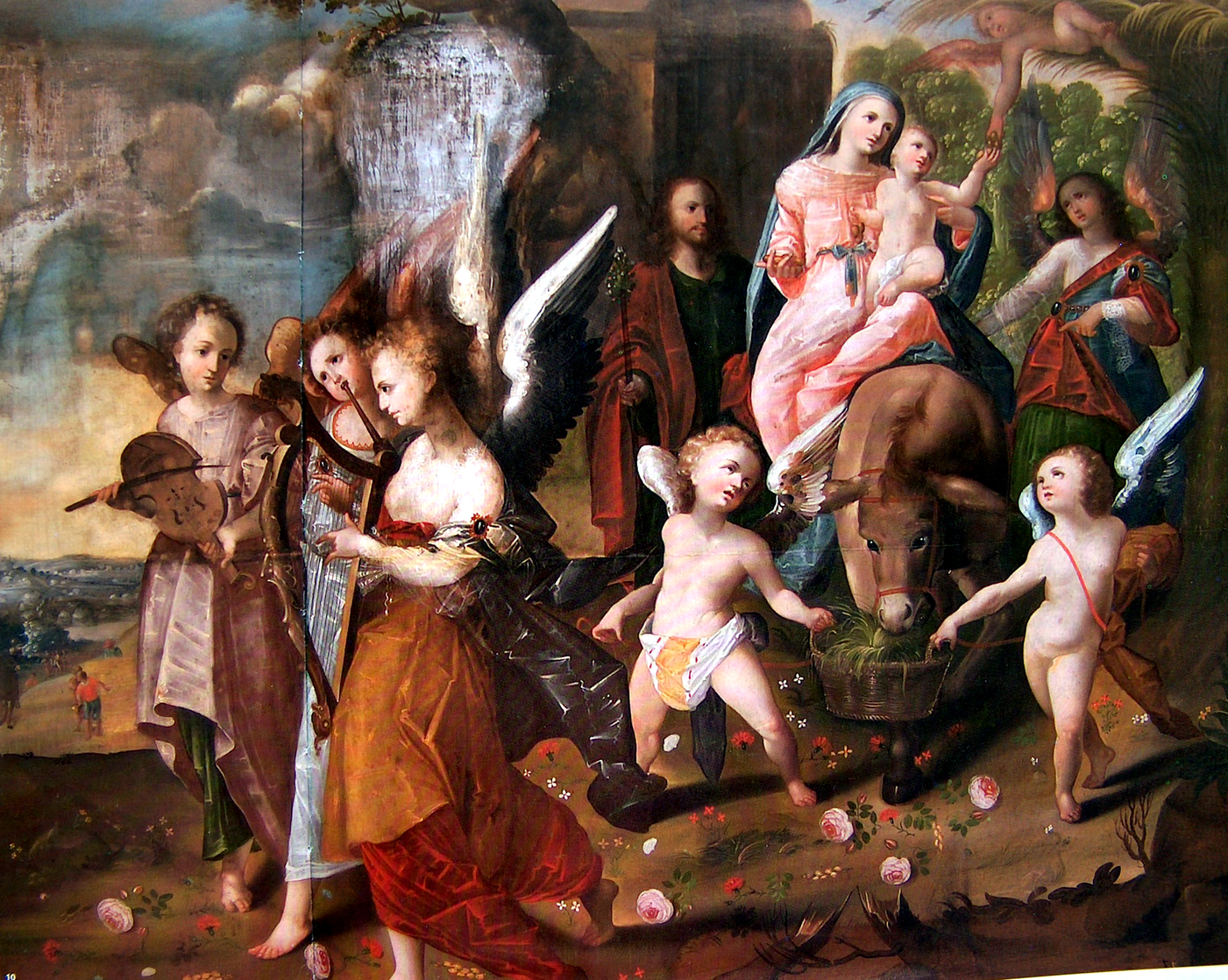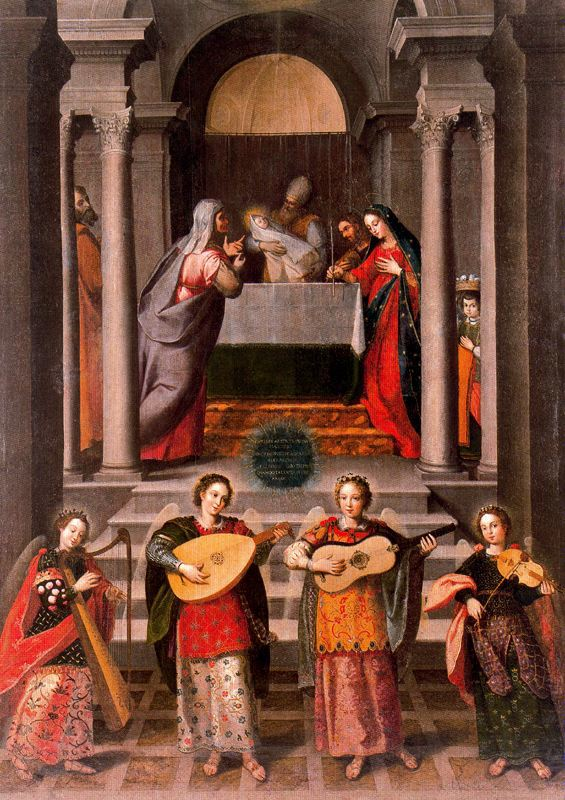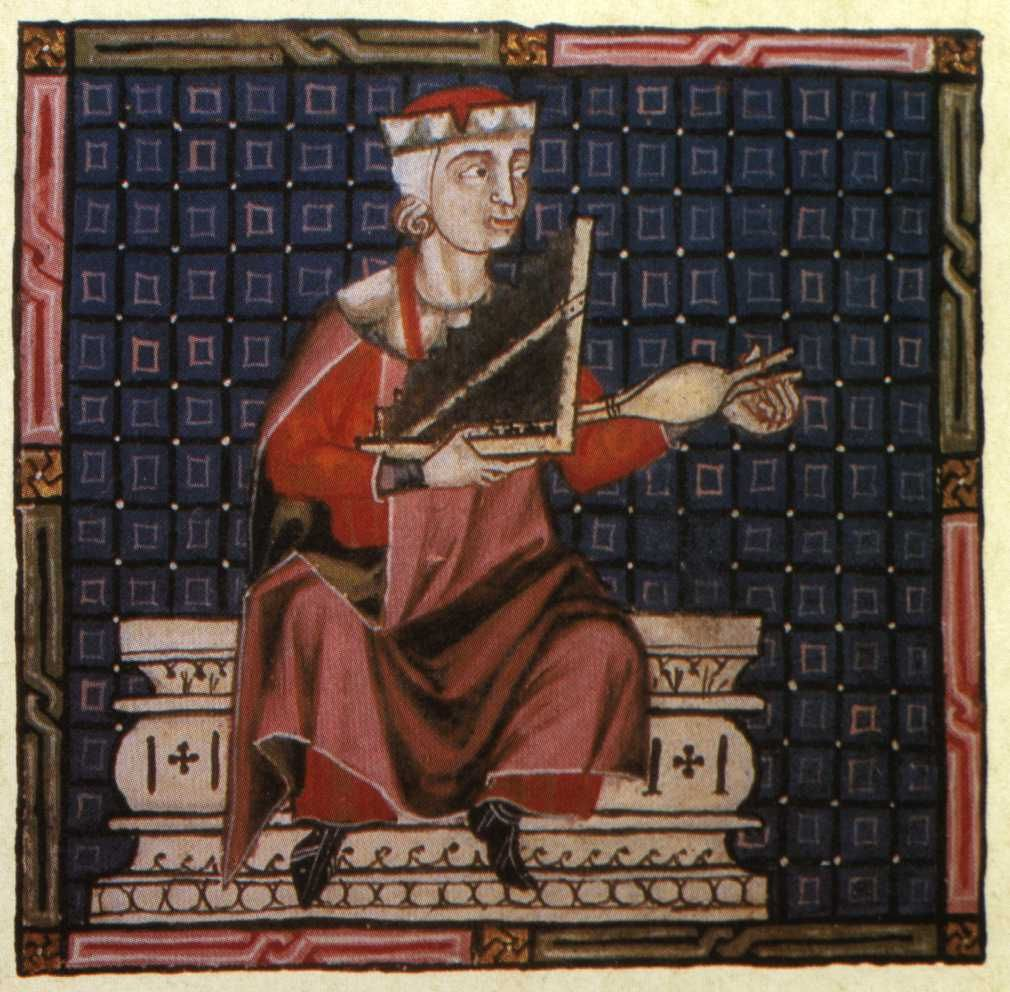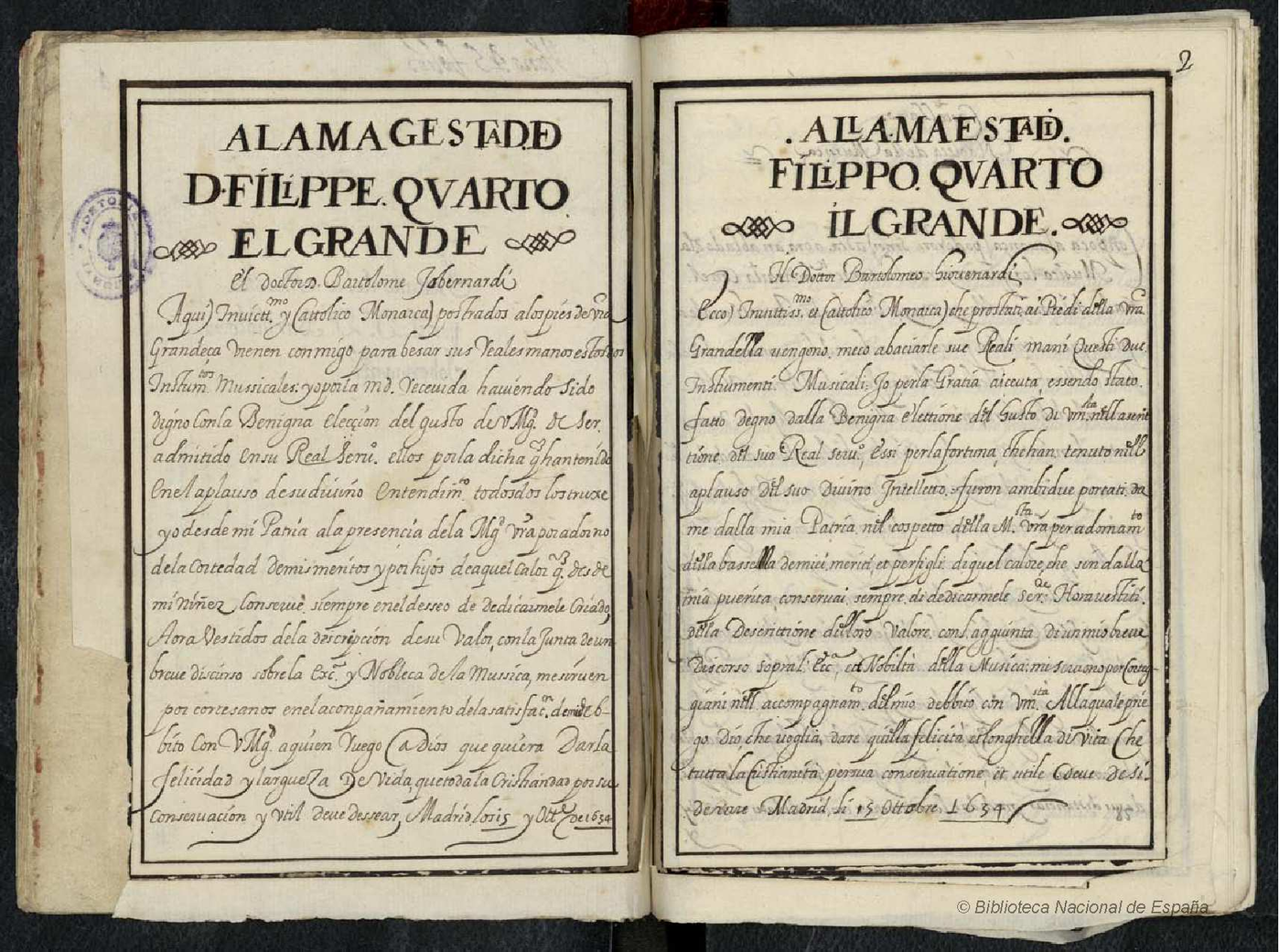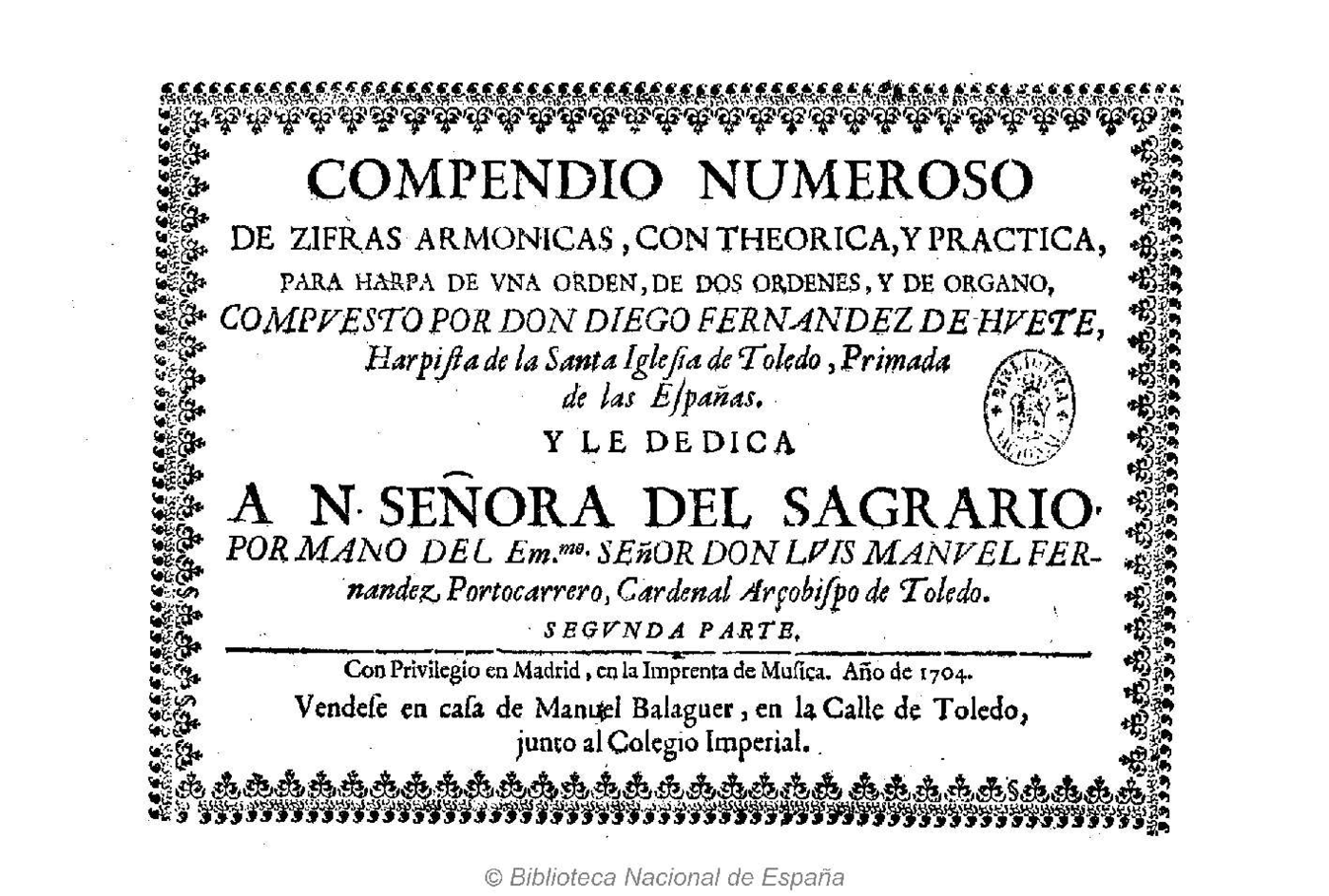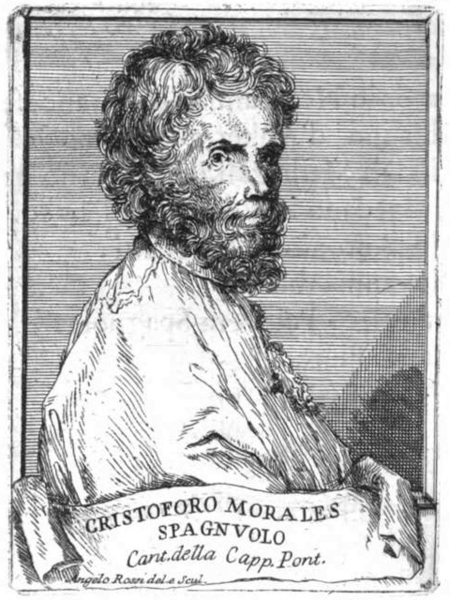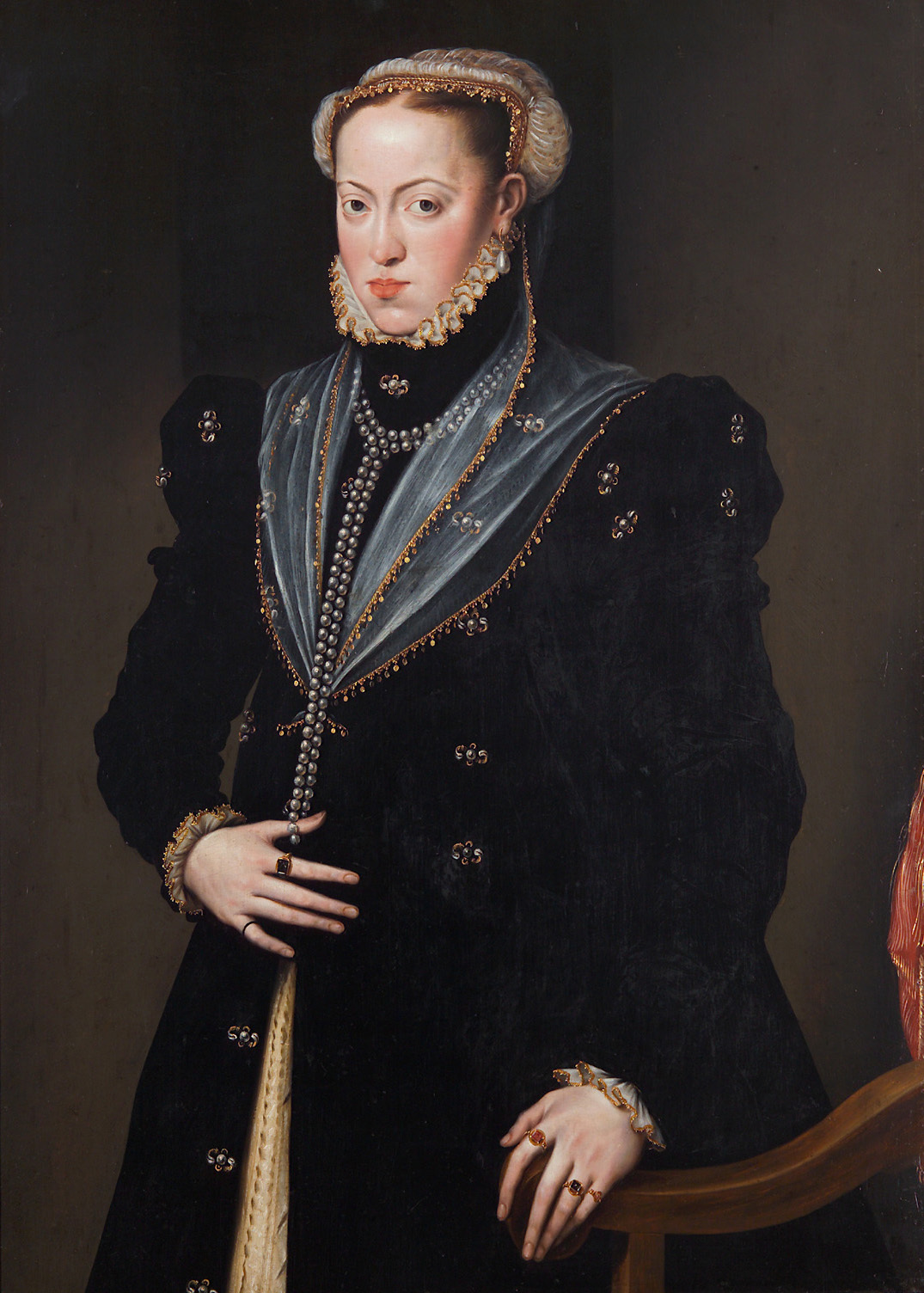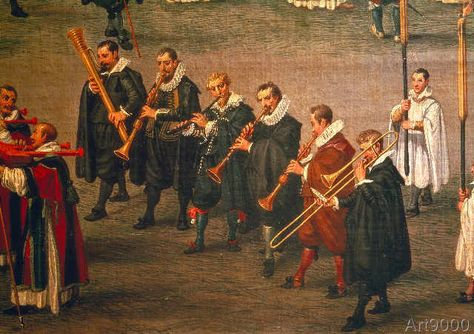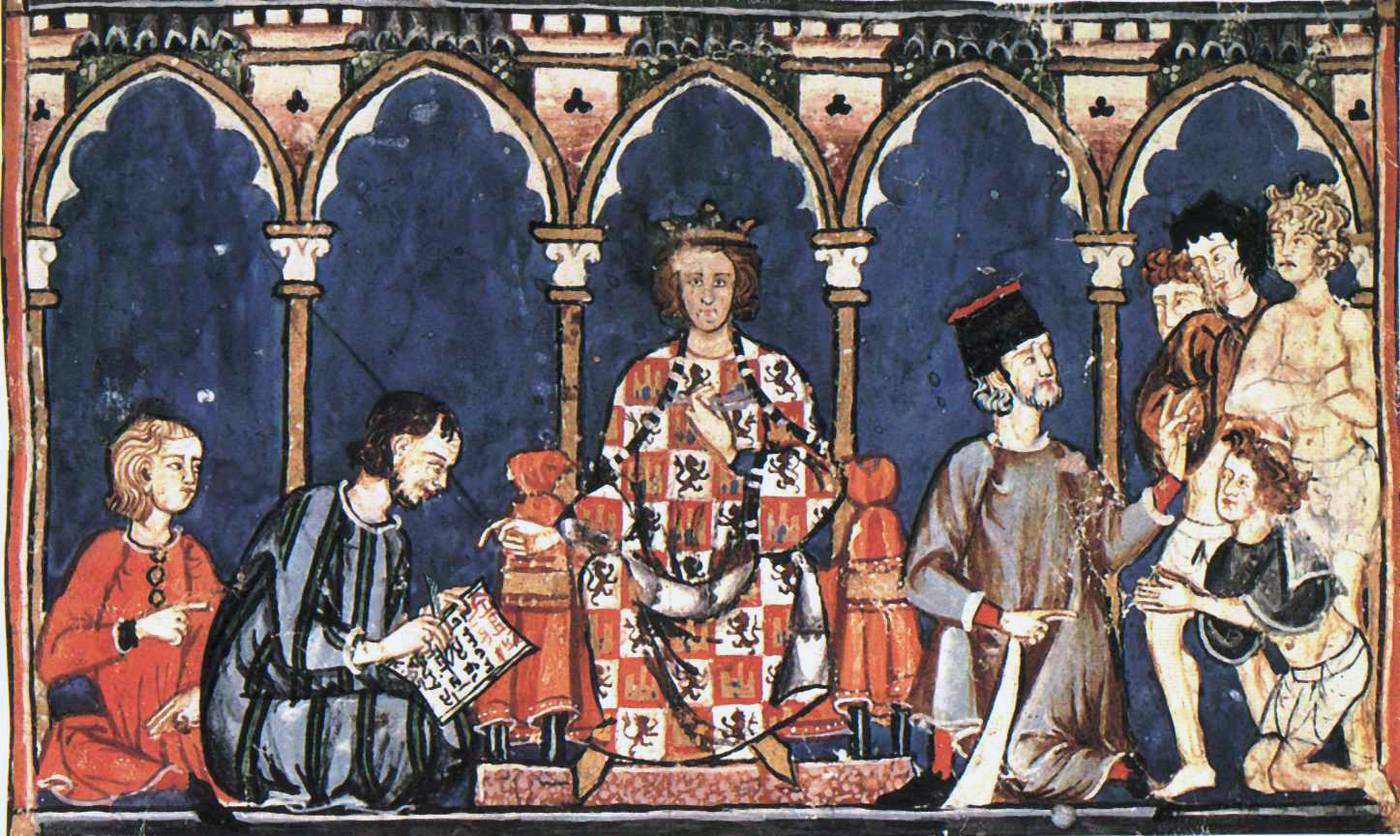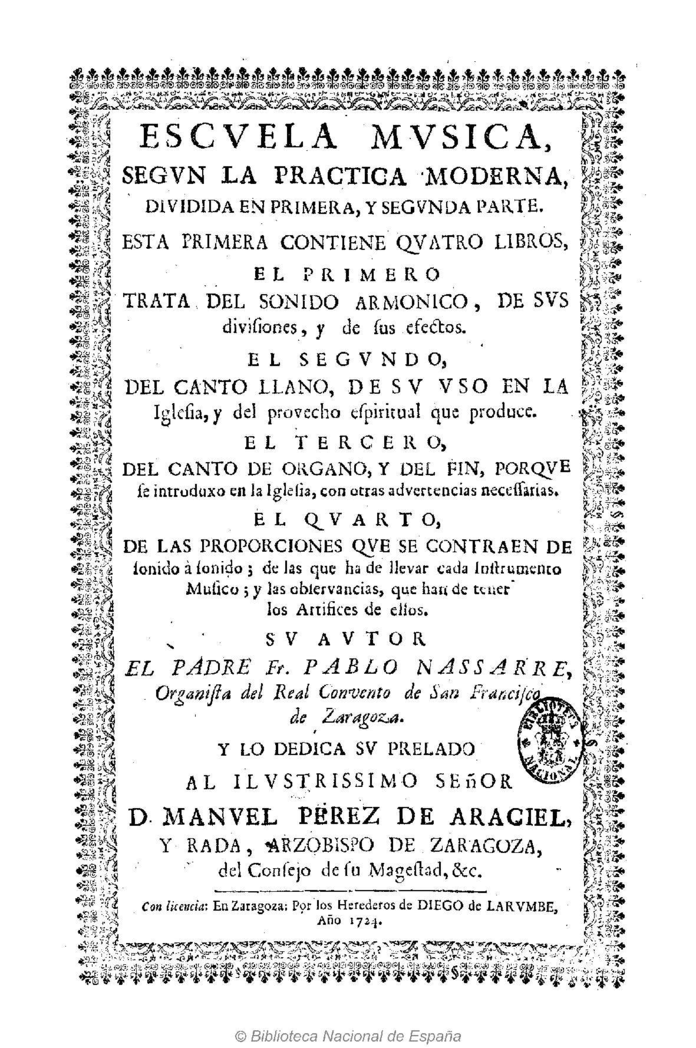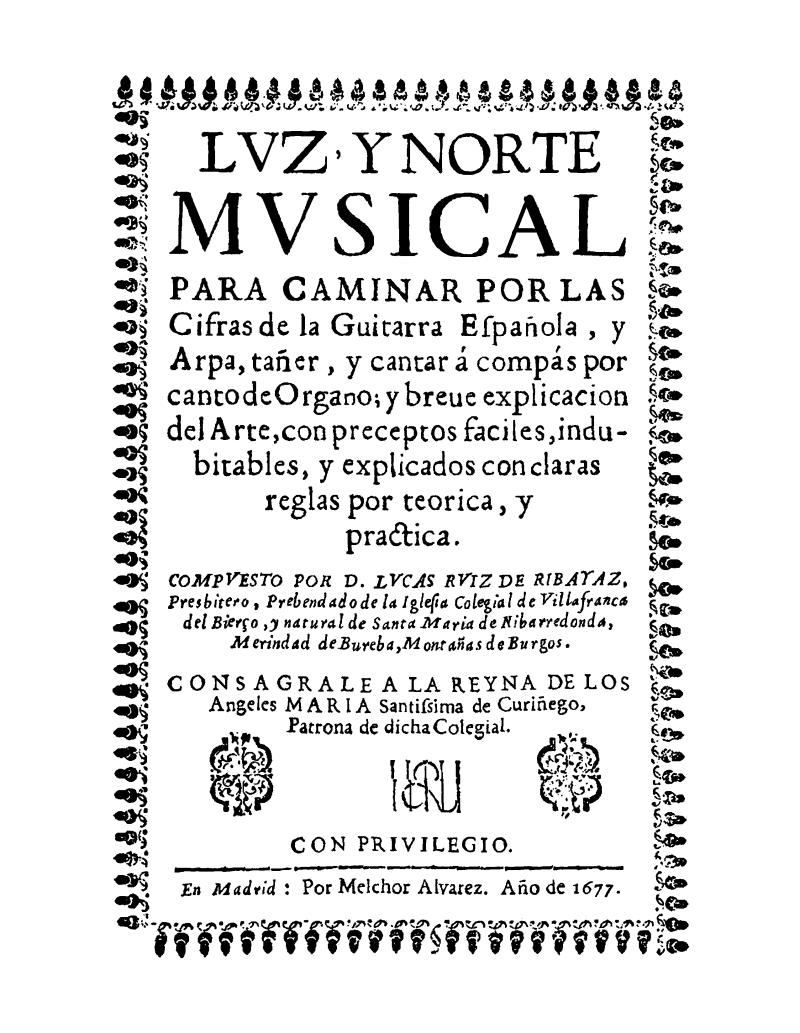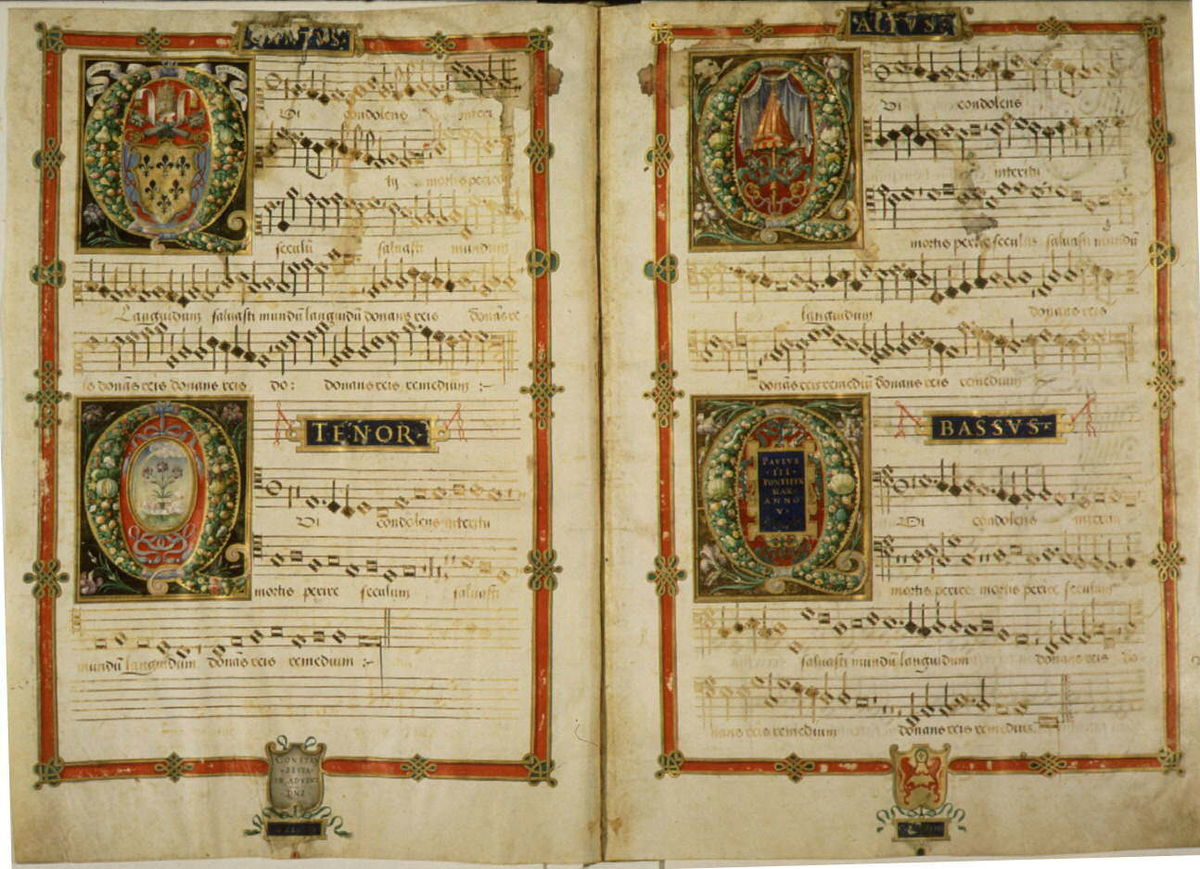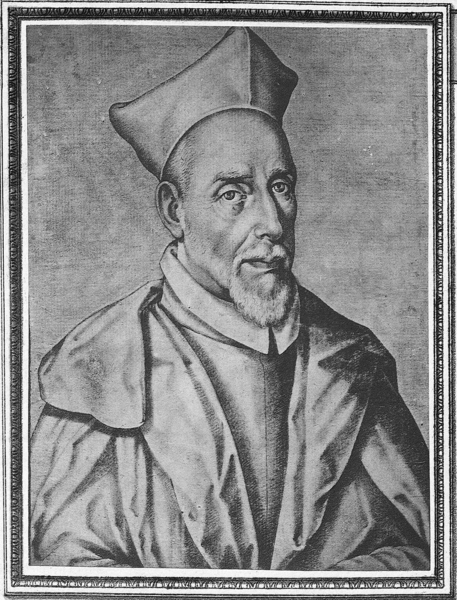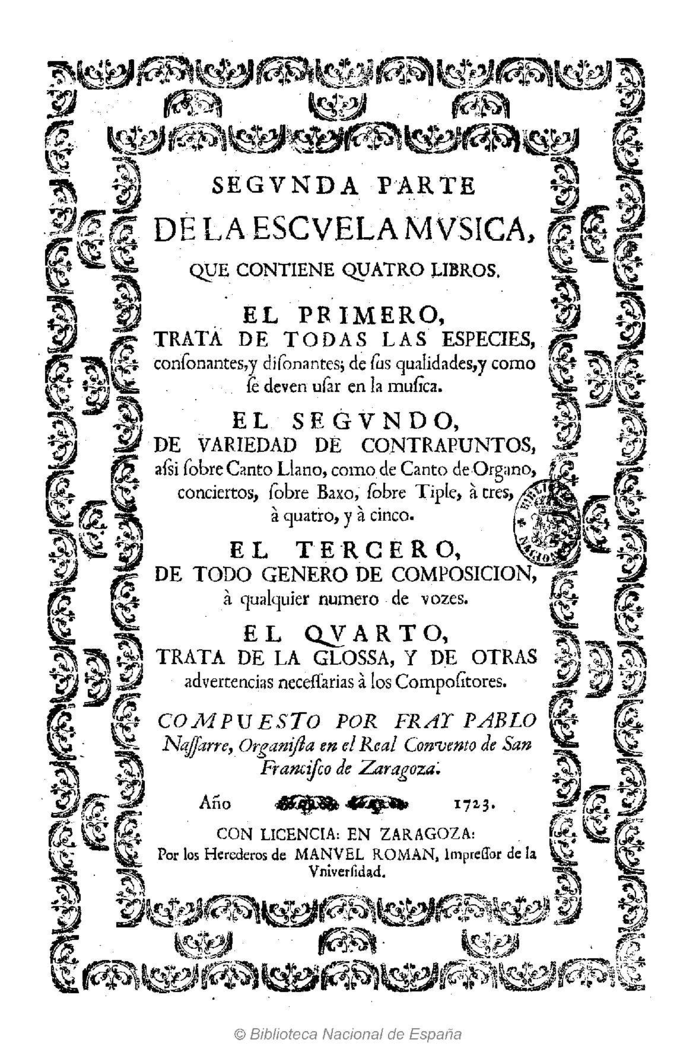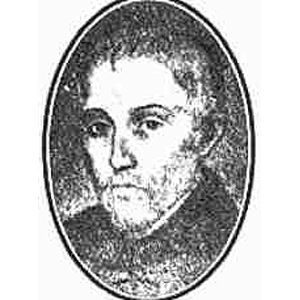The work of Lucas Ruiz de Ribayaz deserves to be discussed in more detail. The full name of his treatise, Luz y Norte Musical para caminar por las cifras de la guitarra española y arpa, tañer y cantar a compás por canto de órgano, y breve explicación del arte, con preceptos fáciles, indubitables y explicados con claras reglas por teórica y práctica,22 is already quite descriptive in itself. Apart from the fact that it is the first printed publication of harp tablature,23 the work by Ruiz de Ribayaz is also a proof of the assiduous use of the harp in the New World. In the prologue he mentions his experience, useful in writing the book, saying that “[…] the world is great […] and that the Author has experience (because he has visited different kingdoms, remote provinces, and overseas) […]".24 It should be remembered that, as already mentioned in the previous chapter, Lucas Ruiz de Ribayaz was part of the retinue of the Count of Lemos, XVII viceroy of Peru, on his journey from Spain to Lima in 1667. It is therefore possible that, although he was mainly a guitarist, he wrote a treatise including the harp inspired by the fact that “[…] they do not know, nor practice, the aforementioned cifras, nor of any other kind: because even if they play, and sing, it is only by heart […]”.25
22 “Luz y Norte Musical to walk through the numbers of the Spanish guitar and harp, play and sing in time with the organ chant, and a brief explanation of the art, with easy precepts, indubitable and explained with clear rules by theory and practice”.
23 In the prologue he explains the difficulties he encountered in the Court's printing presses with musical notation using cifras (=numbers, referring to the harp tablature), due to the unusual nature of such a print genre: “[…] fue preciso traducir la cifra del Arpa, pues para imprimir de la otra suerte, era necesario hacer caracteres nuevos con diferentes matrizes, lo cual no se ha podido ajustar, porque no ha habido quien lo haga […]”
24 Lucas Ruiz de Ribayaz, Luz y Norte Musical para caminar por las cifras de la guitarra española y arpa, tañer y cantar a compás por canto de órgano, y breve explicación del arte, con preceptos fáciles, indubitables y explicados con claras reglas por teórica y práctica, (Madrid: Melchor Alvarez, 1677), http://bdh.bne.es/bnesearch/detalle/bdh0000160002, from p. 1 of the Prologueto the curious reader.
25 Ibidem.
As we saw in the first chapter, the vihuela was associated, during the reign of the Catholic Kings, with the nationalistic approach to music so dear to them. Although extremely used in Spanish territory, this instrument was also widespread in the rest of Europe, adopting, for each country, its own name (as we have seen before we find the viola de ma in Catalonia, the viola da mano in Italy and the viola de mão in Portugal).
Deriving from the medieval viella,36 which could be played de mano (plucked) or de arco (with a bow), it developed in the kingdom of Aragon from the middle of the XV century. This instrument basically consists of a flat-backed Renaissance lute, sharing the tuning with it. Already at the end of the XVI century the vihuela began to disappear, leaving room for the baroque guitar, which will replace it in all environments, including the “trio” of instruments of the basso continuo in Spain.
36 As you can see from the Cantigas of Alfonso X the Wise, where are represented, one next to the other, a player of viella de arco and one of viella de mano.
The first report on a two-order harp is by the luthier Antonio Hidalgo who, around 1615-1616, built two instruments for the court harpists of the time, Juán de Sanmartin and Lope Machado. In his account he says that they are “de dos ordenes enteras y universales”,44 thus including the complete set of chromatic strings. At no time does Hidalgo mention the fact that they were two crossed orders of strings (a typical feature of Spanish harps), but this characteristic can be deduced from Jobenardi's treatise, written some time later, in which, describing the instruments used in Spain, he states that “[...] the crossed-string harp is called two-order […]”.45
Only after 1650 did the cross-strung chromatic harp emerge as the favorite among the three types of harp in use up to that moment (diatonic, semi-chromatic and chromatic),46 thereby occupying an outstanding role within the courtly and ecclesiastical musical chapels.
44 = “of two whole and universal orders”.
45 Bartolomeo Giobenardi (Jobenardi), Tratado de la Mussica (Madrid, 1634), Biblioteca Nacional de España, MS 8931, in: http://bdh-rd.bne.es/viewer.vm?id=0000077606&page=1.
46 Between 1600 and 1650 three types of harp coexisted: the diatonic (with a single row of strings), the chromatic (or double, characterized by two rows of strings, one diatonic and one complete chromatic) and the semi-chromatic (also with two rows of strings, one diatonic and one chromatic, but the second incomplete, without, in other words, all the chromatic notes that are part of a scale).
The harp, the last of the important instruments of the basso continuo in Spain, is perhaps the oldest string instrument known to date.37 Originated, according to the findings, in the Far East by the development of the musical bow (or bowstring), it will spread first in the African continent and then in Europe, but adopting different forms. While in Asia and Africa angle and bow harps were preferred, in Europe the “closed triangle” model is favored, still in use today, in which, with the addition of a “column”, the structure in use up to that moment is “closed”. The first European representations of harps of this type date back to the eighth century, carved on Pictish stones in Scotland. From that time until at least the XVI century, harps will remain almost identical, with a single order of strings, small in size and with tuning varying according to the repertoire to be played.
Starting from the XVI century, however, the inefficiency of the diatonic instrument is being questioned, given the complexities that the music written in that period presented. The process that led to the creation of chromatic instruments began, almost simultaneously in various parts of Europe. The chromatic problem was managed in various ways by the instrumentalists: some pressed the string against the harp's neck,38 when in need of a sharp;39 others transposed the entire composition, so as to facilitate its execution, according to the tuning of the harp.
Juán Bermudo, in his Declaración de instrumentos musicales (1555), after noticing the inadequacy of the harp to contemporary music,40 is the first to think and propose the possibility of transforming the harp into a chromatic instrument, by no longer adapting the music to the instrument, but making it more modern and versatile. His proposal was to insert eight new strings among the diatonic ones, to be tuned so as to make the performance of the cadences of the different modes possible.41 This method, however, instead of simplifying the performance, ended up complicating it further since the space between the strings, thanks to the addition of the new ones, had ended up being halved.
Despite what is written in Bermudo’s treatise, there is no evidence that by the XVI century the harp had already evolved into a double rowed instrument. The iconographic sources do not provide relevant information since, even in the images of the XVII and XVIII centuries, the instruments are always single ranked,42 and the treatises published between Bermudo’s (1555) and Jobenardi’s Tratado de la Mussica (1634) do not have the organological characteristics of the instruments described.43
37 The oldest instruments found date back to 3500 BC, in Sumer (now southern Iraq).
38 Technique used by Ludovido, harpist to king Ferdinand.
Cristina Bordas, “The Double Harp in Spain from the 16th to the 18th Centuries,” Early Music XV, no. 2 (May 1987): 148–63, https://doi.org/10.1093/earlyj/XV.2.148, p. 148.
39 The only way to produce the flat notes was still to tune the harp before execution.
40 “As it has been seen, the harp in the temple that she was made (that is the set of the white monochord) is imperfect for the Music that now is used; because she is for the diatonic genre, and what this time is played is semichromatic genre.”
Juán Bermudo, Declaración de Instrumentos Musicales (Osuna: Juan de Leon, 1555).
41 These new strings were to be colored red, so as to make them more recognizable.
42 The only exception is Diego Valentin Diaz's "Presentation of Christ in the Temple", which dates back to the early 17th century.
Cristina Bordas, “The Double Harp in Spain from the 16th to the 18th Centuries”, op. cit., p. 151.
43 Neither the Libro de cifra nueva para tecla, Arpa y Vihuela by Luis Venegas de Henestrosa nor the Obras de música para tecla, arpa y vihuela de Antonio de Cabeçon by Antonio de Cabezón, of 1557 and 1578 respectively, mention the type of harp on which their tablatures are to be executed.
The organ is one of the oldest instruments still used today. Its origin is historically associated with Ctesibius of Alexandria who, in the third century BC, would have designed an instrument called hydraulis, which entrusted the administration of air, necessary for the production of sound, to the pressure of water through a series of pipes. Its implementation and development has been constant over the centuries, first with the elimination of the hydraulic system in favour of leather bellows, then with the construction of “positive” instruments instead of the “portative” ones; the transformation of the keyboards from the coulisse system34 to the one, similar to the modern one, equipped with keys; the redistribution of the pipes, first arranged in sound “blocks” and then subdivided so as to produce distinct registers.
However, its privileged position within the world of sacred music was not adopted until late. For a long time it was used mainly in all ceremonies and circumstances related to the court and the secular world, which may require the presence of an instrument of great sound power.35 The change of destination seems to have taken place thanks to a completely random event: in 757 the Emperor of Byzantium, Constantine Copronymus, gave an organ to Pepin the Short, who placed it in the church of Saint Cornelius in Compiègne, France. From that moment on, the instrument began to spread rapidly in Christian places of worship and in the liturgy, becoming what will very often be called the “king of instruments”.
34 Levers, pulled by the musician, which allowed or not the flow of air through certain pipes.
35 Among these secular “tasks” we find, for example, that of a war machine, pulled on a wagon, suitable for terrorizing enemies; that of accompanying, inside the stadiums, sports competitions or gladiatorial games.
Unlike the aforementioned Luz y Norte musical, a collection of pieces composed by other composers (of which, however, no names were conserved), the treatise by Diego Fernandez de Huete, Compendio numeroso de zifras armónicas, con theorica y practica, para harpa de una orden, de dos ordenes, y de órgano,26 is entirely constituted of pieces composed by the author. In his treatise, as well as in that of Ribayaz, he will devote a large number of pages to the theoretical part of the approach to the instrument. In the fourteen chapters that make up the “instructions” to the musician, he will explain how to interpret the cifras, both on the harp with one order and on the harp with two, but also the difference in the execution of the same tablatures between the harp and the organ; of the signs of Flat and Sharp and of how to perform them on the harp with a single order, but also how to distinguish them in the harp with two orders of strings; how to "use" the fingers of the hand — one of the very few treatises that provides instructions on this point, as far as the harp is concerned — so as to facilitate execution.27
Don Diego (1633-1713) — harpist, theorist, composer and teacher — spent his entire life in Toledo where, from 1681 to 1710, he served as the cathedral harpist. It is highly probable that among his teachers during his studies can be included the theorist Andrés Lorente and Juan de Navas, the Court harpist at the time; in the Prologue to the reader he says that “[…] the little I know, I learned from the best Masters of Spain […]”.28 His treatise is, in fact, more specific towards the harp technique, including information on fingering and ornamentation.
26 The entire work is divided, according to the author's prologue, into three volumes. Of these, only two have arrived today, published in 1702 and 1704. Both volumes that I have been able to find are, furthermore, divided into three "books". The subdivision of the first volume, containing secular pieces, is conceived to differentiate the compositions for beginners, intermediate and advanced players, respectively divided into the first, second and third book. The second volume, containing sacred compositions, also consists of three books: the first containing 26 passacalles demonstrating the Huete’s 11-modes system; the second presents the modes in ascending and descending octaves; the third consists of psalm settings for one or more voices and harp (or organ).
27 “Great care must be put in the good order of the fingers, because the facility for the execution and composure of the hands depends on it, and in those who pay little attention to this, it is extremely difficult in the execution, for which the Rules that are put for this must be observed. […]”
Diego Fernandez de Huete, Compendio numeroso de zifras armonicas, op. cit., p. 7.
28 Ivi, from the very first page of the Prologue to the Reader.
Fortunately, however, the direct documents relating to the music, as well as the indirect ones relating to the customs of Ferdinand and Isabella’s Spain, allow us to get a rather clear picture of the music, its functions and its artistic and organological components, as well as of many of the emerging figures in the Spanish musical scene of the last quarter of the XV century, on the eve of the discovery a new continent. We have already had the opportunity to observe, however imperfectly, how Spanish music in America was fundamentally organized in two large currents, to a large extent independent from one another: one — sacred music — that followed the path of development of the great cathedrals and the outposts of the catholic faith in the evangelizing missions, and the other that was being organized around the new American courts, secular music of which in the New World little information has unfortunately been kept. America inherits this bipartition from the Spanish scenario from which it derives directly.
Although in theory and on paper, and to some extent also in practice, religious music and secular music from Renaissance Spain are two separate "disciplines", what made them permeable was the “hybridization” made possible by the most gifted among the "chapel masters", whose services were appreciated — often at the same time — both in the choirs of the large metropolitan churches and in the private apartments of the most prominent aristocratic families. Since their foundation in the fourteenth century, the chapels of the great lords — and in particular those of kings and pontiffs — performed an essential function as centers for the avant-garde music, so sacred as profane, since their singers, who were often also excellent composers, practiced both “disciplines”. Although we have no documentary evidence, this hybridization of musical functions must certainly have been even more prominent in the Spanish-American domains, where the reduced number of formally trained "masters" had to favor the application of their skills and style in all the areas required by the official musical activities in the new Vice-kingdoms and their cathedrals. Thanks to the manor chapels, from the beginning of the fourteenth century the court musicians had to become experienced composers and cultists of both repertoires, sacred and profane, to fulfill the many functions that music played within the life of the great lords. If, on the one hand, the chapel singers intervened in the liturgical services, on the other, they were also in charge of interpreting the vogues of polyphonic lyrical repertoire, whether at parties or in private, as it is well illustrated by the presence of Juan de Anchieta (chaplain at Granada Cathedral) and some chapel boys in the chamber of Prince Don Juan, who liked to join their voice to his during the summer meetings if the court.3
At least until the end of the XV century, it is likely that the figure of the professional musician necessarily included knowledge and skills of both fields, liturgical and courteous, and the documented cases of Masters around the court of the Catholic Monarchs who carried out their activities both in the manor chapels and in the choirs of the cathedrals, are not uncommon.4
3 Maricarmen Gómez, “El Renacer Del Repertorio Lírico Español,” in Historia de La Música En España e Hispano América - De Los Reyes Catolicos a Felipe II, vol. 2, 8 vols. (Madrid: Fondo de Cultura Económica, 2012), p. 33.
4 For instance, mention, among others Pedro de Escobar who was hired as a cantor and composer at Isabel’s chapel in 1489, and since 1507 he also assumed the charge of Chapel Master at the Cathedral of Sevilla. Among the conserved works of Escobar are two missae, several motets, antiphons, hymns, and almost twenty villancicos.
Francisco de Peñalosa (1470?-1528) also worked in both environments. On the one hand he worked for Ferdinand the Catholic’s chapel from 1498 until the death of the King in 1516. From 1511, he was the personal master of music of Ferdinand I of Hapsburg, the Infante of Spain. On the other hand he was appointed contemporarily, and on express request of the King, as the canónigo of the Cathedral of Sevilla, a charge that he maintained since 1513 until his Italian journey (1517-1521), where he worked for the Chapel of Pope Leon X. One of the most acclaimed composers of his generation, Peñalosa left seven misas (six of which complete) and a large number of motets, magnificats, hymns, and lamentaciones.
Under the aegis of the Catholic Monarchs, Spain begins — and to a certain extent completes — a project that is at the same time political, ethnic and cultural, aimed at defining a recognizable national identity, rooted in the values and symbols of Castile. The military expulsion of the Arabs from the peninsula, followed a little later by the political expulsion of the Jewish community from Spain, represents the tangible aspect of a Hispanic vision of the world that is reflected — in a less obvious way — in culture, the arts and music as well.
The music that will reach the New World at the end of the XV century is not only "of Spanish origin" but, rather, a characteristic expression of the Hispanic culture, as it was configured in the historical moment in which it was defining its own autonomous identity.
Even if this analysis would go beyond the specific purposes of this study, it would be interesting to compare the musical repertoires and the organological ensembles that participated in the incipient American colonization in the area of Spanish influence with those influenced by the other European powers that set out to conquer the New world. It is easy to foresee that Ibero-American music had at most a reduced kinship with the "rest" of European music.
Courtly music
Regarding its identity in the field of secular music, XV-century Spain is still strongly anchored in the traditions of the Ars antiqua,8 coming from medieval teachings and carried out with great fervor by Alfonso X the Wise who, during his reign, fostered a political sense of national unification, leading to a "spirit" and a sound easily identifiable as Spanish. Despite the attachment to medieval ways of making music, XV-century Spain was flooded with foreign currents of thought from England, France and Italy, corresponding to the Ars nova.
Relations with the other European powers of the time were particularly strong, especially those with France and Italy. It seems right, therefore, to assume that during the two centuries that lasted the Renaissance in Europe, the music of the various countries, among other things, has merged and mixed. Think, for example, of the case of the "twinning" with France - with the family relations between the Spanish and the French families of the Anjou and Burgundy - from which will come ballads, virelais and cancioneros to cheer the courts of Castile Aragon; or the political-territorial union with Italy, thanks to the Kingdom of Naples, which will bring with it a fusion of the Spanish villancicos with the Italian frottole.9
8 Ars antiqua refers to the first great Pythagorean school in Europe, the school of Notre-Dame, which gave rise to a first great experience of counterpoint, in opposition to the polyphonic movement that would emerge in the fourteenth century, the Ars nova.
9 The term madrigal itself was, in Spain, a locative word, even before the Italians sang their mandriali – from Latin mandria-mandrialis in reference to the rustic and pastoral content, or from matrix-matricalis, “of mother tongue, dialectal”.
The XV century, until the first half of the 16th century, was also the period of development of the cancioneros — collections of cantigas, serranillas, villancicos — such as the Cancionero de Palacio (1490-1530),10 the Cancionero de la Colombina (end of the 15th century),11 the Cancionero de Medinaceli (mid-16th century)12 and the Cancionero de Uppsala (1500-1550).13 In these cancioneros we find compositions by various authors but the composer Juan del Encina (1468-1529) stands out,14 for quantity and quality.
Juan del Encina was recognized first as a poet and playwright and then as a composer. After completing his studies at the University of Salamanca, — the same alma mater that formed Antonio de Nebrija — he became part of the choir of the cathedral of the same city, first as a mozo (1484) and then as a chaplain (1490). Although he has spent much of his life in ecclesiastical institutions, as far as we know he never composed anything related to the world of religious music.
With the writing of his Cancionero in 1496, containing the fundamental material of his literary production (eight eclogues, the translation of Virgil's Bucolics, as well as works in prose and rhyme), he was to establish himself as a leading figure in the Spanish literary world of the time. His being a man of letters made his villancicos and his vocal compositions spectacular, because the power of his music resided in the word and in its extraordinary spontaneity.15
As for the written material regarding vocal and instrumental music — both musical and theoretical — that has come down to the present day, it is impossible not to notice the enormous quantitative difference between the two. This does not mean, however, a lower technical level of instrumental musicians or a more occasional use of instrumental music,16 but largely depends on the fact that the latter, as well as its technique, used to be transmitted orally, very rarely in formal treatises: after all improvisation, both direct and on pre-existing material (diminution), was extremely widespread.
10 Preserved in the library of the Royal Palace of Madrid and containing 460 works by authors from the end of the XV century and the beginning of the XVI century.
11 It derives its name from the fact that it was found in the library of Hernando Columbus, son of Christopher Columbus, in Seville.
12 Otherwise known asCancionero musical de la casa de Medinaceli. Collection of more than one hundred works, including songs and madrigals, by Spanish composers.
13 So called because it was found in the library of that city. It is also known as Cancionero del duque de Calabria. It contains popular villancicos (especially on Christmas themes), madrigals and canciones of European composers.
14 Most frequent composer in the Cancionero de Palacio, with his 61 compositions.
15 Cristina Urchueguía, “La colonización musical de Hispanoamérica,” in Historia de la música en España e Hispano América - De los reyes catolicos a Felipe II, ed. Maricarmen Gómez, Fondo de Cultura Economica, vol. 2, 8 vols. (Madrid, 2012), p. 70.
16 The first didactic treatises, as Silvestro Ganassi’s Fontegara (1535) or Diego Ortiz’s Tratado de glosas (1553), for recorder and viola da gamba respectively, dating back to this period, denote a very high technical and musical level.
Among the relatively reduced corpus of treatises aimed at formal teaching, it is important to remember the figure of Luis Milán, Spanish composer and vihuelista, composer of El Maestro y las estrellas,17 the first book published in Spain dedicated to the teaching of a musical instrument and written in tablature. Published in Valencia in 1536, it does not contain adaptations of polyphonic vocal pieces, unlike other books for vihuela of the time, but original pieces, composed by Milán specifically for this instrument, including fantasies, pavanas, tientos, villancicos.
One of the most popular instruments at this time in Spain was the harp, as we have seen. Almost all of the treatises and music collections dedicated to this instrument in the history of Renaissance and Baroque music date back to this geographical region, and to the centuries examined in this research. In addition to being a fundamental instrument in the basso continuo, and therefore in all religious institutions, it was endowed with numerous technical and musical possibilities, which made it the prince, together with the organ and the vihuela, of instrumental music in the Renaissance period.
There are not many treatises left, if one thinks about the totality of what was written at that time, but, given the scarcity of any other type of material regarding the harp in the rest of Europe, the little that remains is very valuable. Suffice it to say that, between the first treatise that talks about the harp of two orders and the last, in a span of exactly two centuries, as many as ten treatises, or music collections, have discussed, more or less extensively, this instrument.18 Among them, there are different approaches through which the instrument is discussed. Some discuss extensively about its construction, as well as giving general instructions on tuning, transposition and accompaniment;19 others are more pragmatically directed towards the "practice" of the instrument, including tablatures and technical instructions for playing;20 others still refer of the harp only marginally, including it in their sections of continuous bass methodology, in most cases together, with the organ and the baroque or vihuela guitar.21
17 Its full title isLibro de música de vihuela de mano intitulado El Maestro.
18 The first being Bermudo’s Declaración de instrumentos musicales (1555) and the last Minguet’s Reglas y advertencias generales (1754).
19 Pablo Nassarre’s Escuela Música, published in 1724 but probably written before 1638, deals with the most disparate topics related to musical performance, technique and sound proportions tied to the construction of musical instruments. In this chapter it deals in detail with the construction of the harp, following these proportions.
20 This is the case with treatises such as Libro de cifra nueva para tecla, Arpa y Vihuela (1557) by Luis Venegas de Henestrosa; Obras de música para tecla, arpa y vihuela (1578) by Antonio de Cabezón, posthumously published by his son Hernando; Luz y Norte musical (1667) by Lucas Ruiz de Ribayaz, first printed publication of harp tablature; or the two volumes of the Compendio numeroso de zifras (1702-1704) by Diego Fernandez de Huete.
21 Gaspar Sanz’s Instrucción de música sobre la guitarra española (1674); Joseph de Torres’ Reglas generales de acompañar (1702); Pablo Minguet’s Reglas y advertencias generales (1754).
Tomás Luis de Victoria, born in Castile in 1548, was mainly active in Italy, where he resided from the change of voice, probably around 1567, until at least 1585 — when he was hired to the service of Empress Maria of Austria, sister of Philip II —, but his work was widely appreciated and recognized also in the mother country. During his time at the Germanic College in Rome he certainly met Giovanni Pierluigi da Palestrina, from whom he could have received musical lessons, given the considerable influence of the Palestrinian style since his first publications and with whom he shares being counted among the most important composers of the Counter-Reformation. Unlike many of his contemporaries, but also previous and later composers, during his career he devoted himself exclusively to sacred music, composing, between 1572 and 1605, countless motets, masses and polychoral works, collected in numerous books that he himself dedicated to leading political and religious figures in his time.
The participation of musical instruments was not uncommon in the performance of vocal polyphony. This is made evident by the regular presence in Spanish cathedrals of groups of ministriles, as well as by the possibility of a purely instrumental performance of vocal polyphonies, both at the hands of consorts,32 combined groups of instruments from different families and instruments properly polyphonic, such as the organ, the virginal, the harp, the lute or — in Spain — the vihuela. It is also common, in the Renaissance period, the amateur performance of music in domestic parlors. Frequently these musicians were not able to read conventional musical notation, so various types of tablature began to develop, one for each type of instrument, as seen in the previous section, facilitating and spreading the study of musical instruments even outside ecclesiastical institutions.
32 The term consort, used in England during the 16th and 17th centuries, indicated an instrumental ensemble. This could be "whole" (or "closed") if it was composed entirely of instruments from the same family, or "mixed" (or "broken") when it was composed of instruments from various families.
Musical instruments
Speaking about the music of the time, it is impossible to avoid the topic of the instruments that were used to produce it — which are after all, with some exceptions, the instruments that will be transplanted into the New World. As we will see later, the three main instruments of the musical life of the Spanish Renaissance were the organ, the vihuela and the harp, which all belonged to the so-called Bassa cappella.33
33 Or Bassa musica. A group of musicians distinguished by a modest sound volume such as, for example, lutes, violas and flutes, as well as the aforementioned. This term is used in opposition to Alta cappella, or Alta musica, composed of wind instruments such as bombards, bagpipes and trumpets, also called "Pifari".
Chapter four.
The Old-World composers
“[…] el harpa (en lo politico) el mas adecuado Simbolo de una Monarquía, y su acorde consonancia, descripción de un Reynado feliz, quando al acertado impulso de la mano que le rige, cada cuerda suena, según el temple que la determina […]”
Diego Fernandez de Huete, Compendio numeroso de zifras armónicas, (Madrid: Imprenta de Musica, 1702).1
Music in Spain, and especially Spanish music, lived in the second half of the XV century a period of extraordinary fervor. If the complex information transmitted by the documentary sources is mainly relating to the sacred music and the music of the great aristocratic courts, it is however certain that music must have had an increasing importance also in the daily life of pre-imperial Spain. It is no coincidence that, in 1498, when the king and queen of Castile authorized the shipment of some music and musical instruments to the New World, these were not primarily aimed to triumphantly celebrate the arrival in the new lands of the Admiral of the sea Ocean, Christopher Columbus, nor to resonate in religious liturgies, but rather were expressly conceived "as a pastime"2 to accompany and delight the conquerors.
The repertoire of this popular music in the Spain of the Catholic kings has been handed down only fragmentarily, and this, as we have seen in the previous chapters, prevents us all the more from visualizing its modes and contents once it was transferred to the new American lands, first with the discoverers and later with the new settlers.
1 “[…] the harp (in the political) the most adequate Symbol of a Monarchy, and its consonance, description of a happy Reign, when to the right impulse of the hand that governs it, each string sounds, according to the temple that determines it […]”
Diego Fernandez de Huete, Compendio numeroso de zifras armonicas, con theorica, y practica, para Harpa de una orden, de dos ordenes y de Organo, 1st ed., vol. 1, 3 vols. (Madrid: Imprenta de Musica, 1702), http://bdh.bne.es/bnesearch/detalle/bdh0000075392, p. 1.
2 The Catholic Monarchs to Admiral Christopher Columbus. Instruction for the good government of the people of the Indies, (June 15, 1497).
The prodigious development of Spanish secular music of the late XV century is merely a reflection of the expansionist aims — both territorial and cultural — of the Catholic kings. The reconquest of the southern regions of the Iberian Peninsula, after centuries of Arab domination, culminating with the capitulation of Granada in 1491, always offered new opportunities for triumphal entries of Fernando and Isabella in the new liberated territories, accompanied by a growing ostentation of instruments a fiato, “bastardas e clarines e trompetas italianas e cheremías e sacabuches e dulçainas”,5 that underline the dignity of the sovereign couple. Not only for the "general public" of the parades and city triumphs, but also for the more restricted and selected one of the aristocratic courtly environment, music becomes an instrument of representation of prestige, which accompanies the most beautiful names of Spain in all their movements, both for reasons of war and peace. As Maricarmen Gómez points out,6 the chapel, with its masters and singers, becomes a tool to project the image of the monarch — or of the powerful aristocrat — into the land of the sacred. The number and quality of the royal singers increases in parallel with the prestige of the sovereigns. In the Queen's Chapel, the singers tripled in fifteen years (1490–1504), in that of King Fernando they go from ten to fifteen in ten years. At the death of the queen, the king will incorporate some of the singers of Isabel into his own chapel, and at the end of his reign almost forty singers will serve the music of the king.7 Interestingly, all these masters were Spanish.
5 Tess Knighton, Música y músicos en la Corte de Fernando el Católico, 1474-1516 (Zaragoza: Institución “Fernando el Católico,” 2002), p. 151.
6 Maricarmen Gómez, “El Renacer Del Repertorio Lírico Español,” op. cit., pp. 33-34.
7 Ibidem, p. 34.
Within the Spanish court at the time each member of the royal family owned their own musical chapel, with musicians and singers who belonged exclusively to them.
Religious music
During the Renaissance period, and in large way independently from the influence of local cultures, Europeans expressed their devotion through two main musical genres, both written in Latin: the mass and the motet. Throughout Europe we find great representatives of these musical genres, such as Palestrina and Dufay, with their masses on cantus firmus, generally for four voices. In Spain, the greatest representatives of the genre, particularly of parody and paraphrase mass,29 were Cristobal de Morales, Francisco Guerrero and Tomás Luis de Victoria, the three most prominent Spanish polyphonists of the XVI century.
Just as de Victoria, as will be seen further on, Cristobal de Morales composed only vocal pieces linked to sacred music throughout his career.30 Born and raised in Sevilla, he received his musical training as "niño cantor" in the choir of the Cathedral of the city, whose musical chapel was under the direction of Francisco de Peñalosa, importer of the Flemish technique. In 1535, following the spread of his fame as a singer, he entered the service of the papal chapel of Pope Paul III, where he remained until 1545, and where he had the opportunity to meet the most skilled composers of the time, such as Costanzo Festa, Jacques Arcadelt and Nicolas Gombert, also members of the papal choir. Forced to return to Spain, he obtained the position of choir master in the cathedral of Toledo, where he remained for a couple of years and where he had the opportunity to become master of other great composers of the time, including Francisco Guerrero.
Francisco Guerrero is the only one of the “polyphonist trio”, and one of the few Spanish authors of the time in general, to have also developed the secular song in his volume Canciones y villanescas espirituales (1589).31 Little is known about the childhood and formation of the Sevillian composer, except his being a disciple of the already mentioned de Morales. After completing his training at the cathedral of Toledo, in 1546, at the age of 17, he was appointed chapel master of the cathedral of Jaén, where he remained until 1549, before moving to Málaga and then returning to Seville. Unlike Morales or Victoria, as we will see, Guerrero spent much more time in Spain, despite a multitude of trips to Europe and then to the Holy Land. He differs from the other two composers for the presence, in the corpus of his works, of profane and instrumental compositions. His reputation, already at a young age, was so vast that his works were published and performed abroad especially, and for a long time (at least until the end of the XVII century) in American cathedrals.
29 A parody mass is a mass that uses, as part of its melodic material, a fragment of an existing composition, such as a motet or a chanson; while a paraphrase mass uses, as a basis for the composition, a very elaborate version of a cantus firmus.
30 Although the doubling of voices by instruments was common in the performance of vocal polyphony. It was common, however, in the performance of vocal polyphony, the doubling of voices by musical instruments.
31 Francisco Guerrero, Canciones y Villanescas Espirituales (Venezia, 1589).
